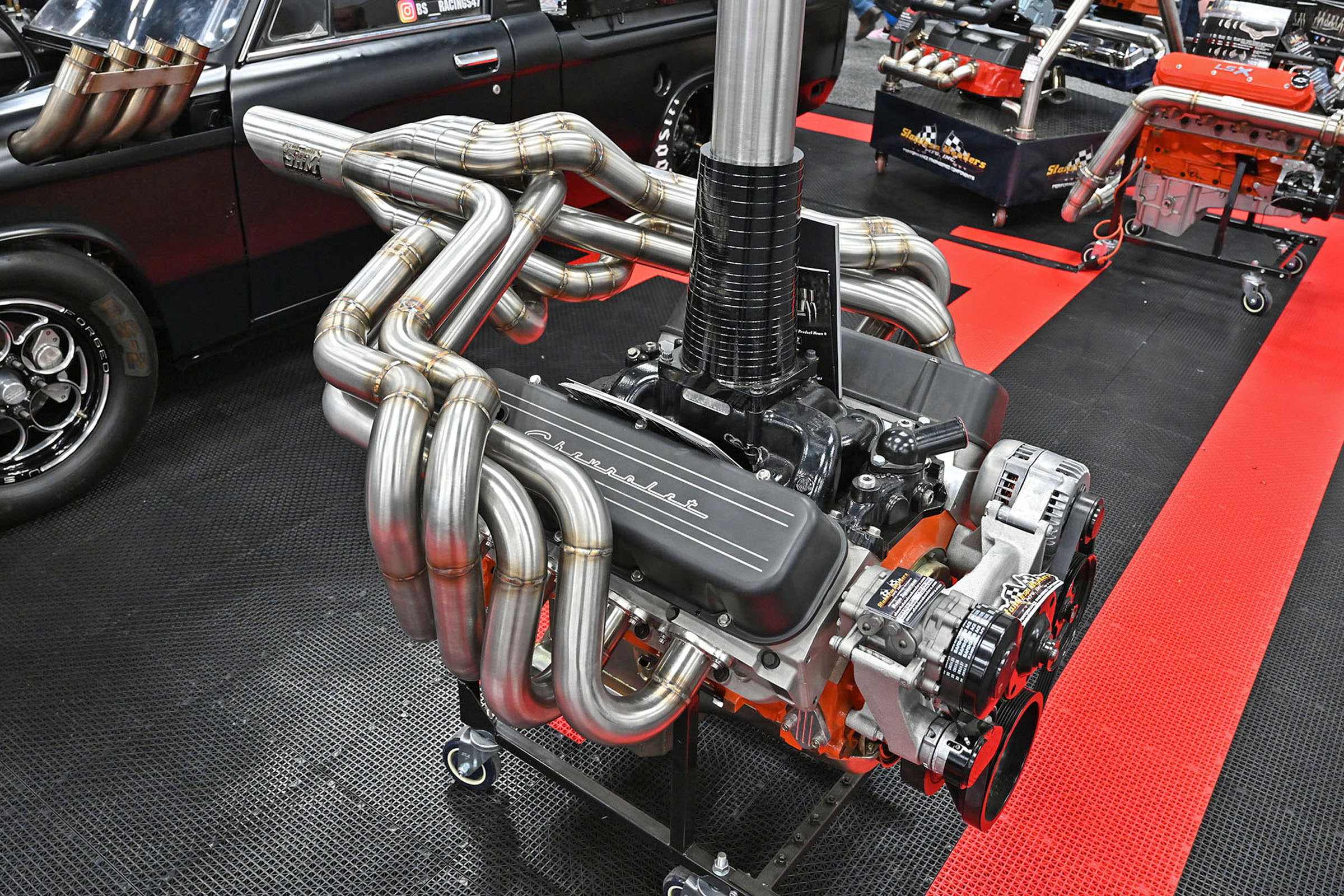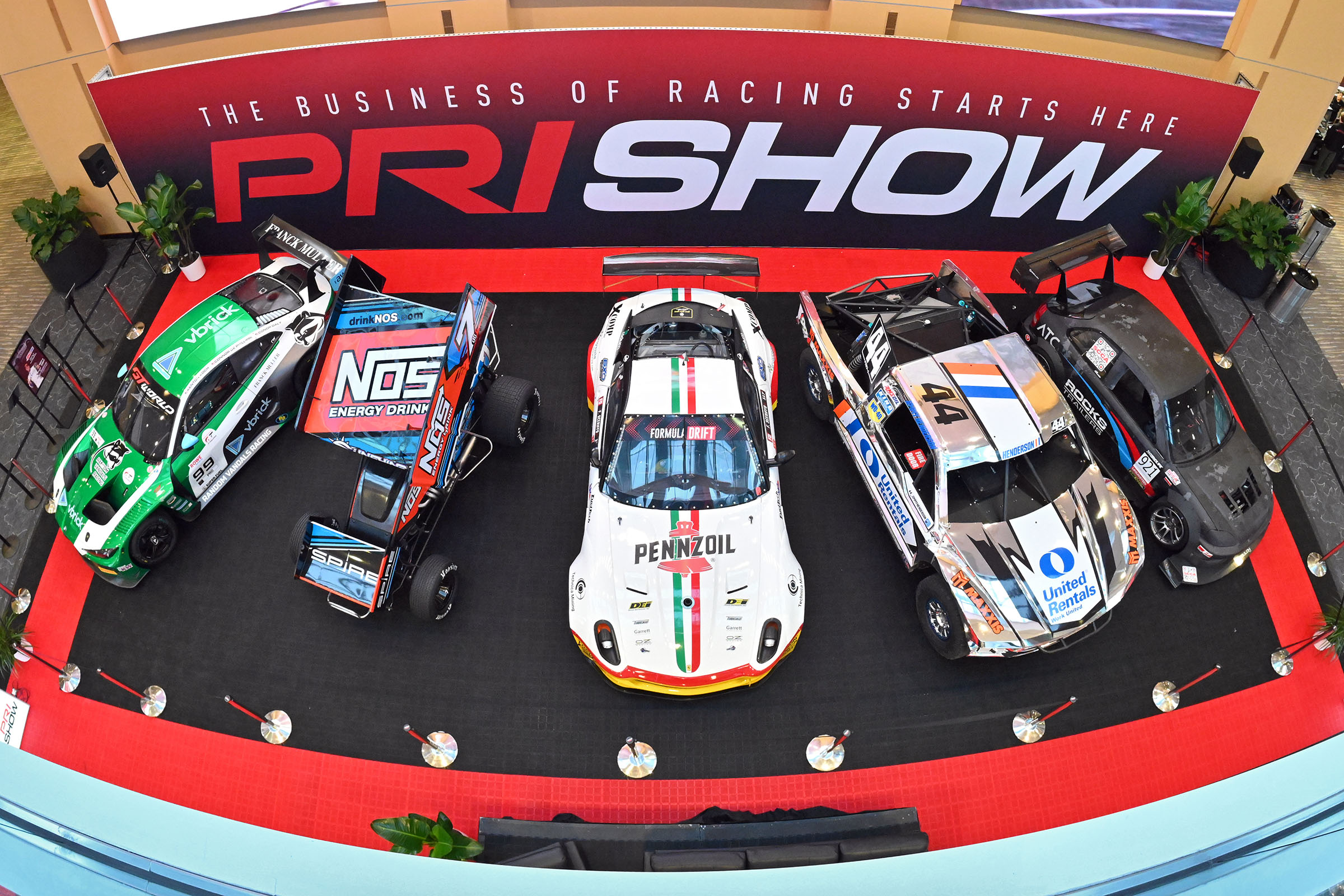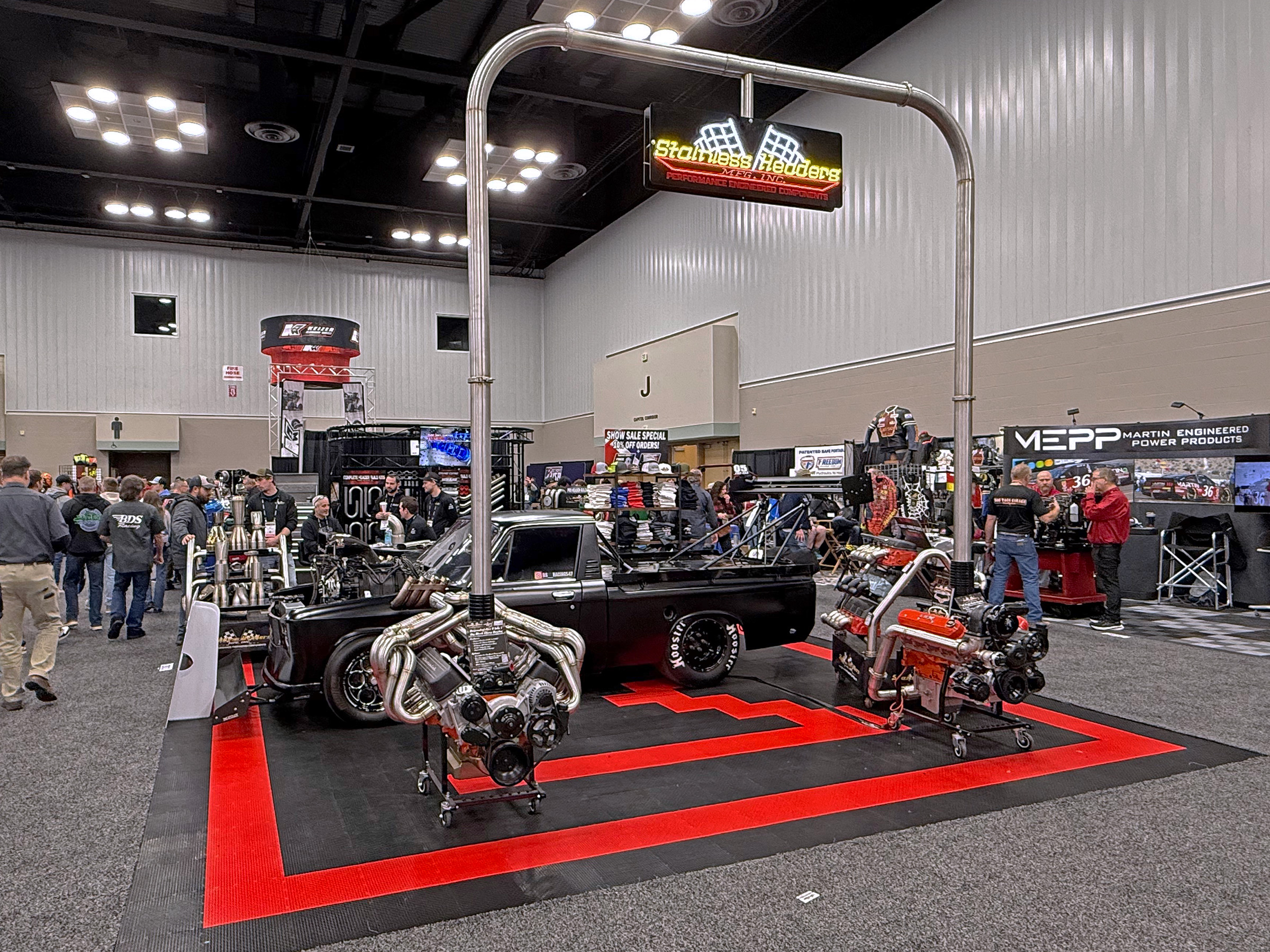Updating a ’49 Mercury Suspension With Late-Model Hardware That Doesn’t Alter the Look

Photography by Lois Megugorac
As car enthusiasts continue to expand upon original designs with more sophisticated components and refined variations, the old debate over whether these upgrades are worth all the trouble, as well as the expense involved, continues to rage. The group as a whole will never be in complete agreement. After all, with cars such as the ’49 Mercury having roamed America’s highways for decades—with tens of millions of miles between all of the cars originally produced—who’s to argue with what’s been done up to this point? But does that mean there’s no room for improvement? Does that mean newer, safer and more compliant solutions should not be incorporated into more modern builds? Of course not.
While it’s easy to talk about the inherent values of the original Mercury, and other vintage cars for that matter, all it takes is a short trip down the road to negate any further discussion as to their true worth as over-the-road cruisers. The benefits of modifying such antiquated suspension designs are manifold. Front suspensions such as that found on original ’49-’51 Mercurys simply don’t cut it today, and that becomes obvious as soon as you navigate the first corner or apply the brakes. And yet these simple changes need not alter history as much as build upon it.

Having built his first Model T-based lakester long before World War II, Dick “Magoo” Megugorac has a unique and thorough understanding of the differences between cars that look good and ones that live up to their appearance. After all, having built something in the neighborhood of 60 cars for customers over a 30-year period, Magoo is a walking, talking measure of experience with a tremendous amount of expertise. While new-age builders, armed with newer, more recent experiences and technologies at their disposal, might scoff at the basic nature applied to many of his cars, it’s interesting to note that the majority of them are still on the road today, be they solid-axle examples or fully independent designs, complete with hidden torsion bars and inboard shocks. What’s more, keeping this a family matter, many of these cars feature upholstery by Mrs. Magoo, who also handled the photography for this story.
More recently, Magoo spends his days working on projects of his own, including the Mercury you see here. The car was first featured in “Street Rod Builder” back in March ’02. Since completing this car, he has logged thousands of miles traveling throughout the western half of the nation, doing as he’s done since his teens—spending as much time as possible behind the wheel. Like so many generations of car builders and owners, Magoo enjoys the rodding experience.

As the years and months passed since our introduction article, Magoo became dissatisfied with the shortcomings of the Merc’s original front suspension, as it centers, literally, on kingpins offering .5 degree of negative caster. For those unaware of this most rudimentary hardware, the telltale signs of these OOS (Old Old Stock) components include continual highway wandering, especially under hard braking. As you might imagine, the uneasiness that comes with constantly having to correct steering wheel input to stay in the lane tends to wear down one’s patience and confidence, as it did Magoo’s.
To alleviate the limited capabilities of an original ’49-’51 Mercury (or a Ford of the same vintage), Jamco, a division of J&M Enterprises Group, has devised a modification to the existing front suspension in these cars. By replacing the original kingpins with capped ball joints, you can upgrade the capability and reliability of the dated design to be more within current standards in terms of handling and braking. The company has done this with a much more rigid arrangement. Because Jamco also manufactures springs, it is capable of creating up to 5.5 inches of suspension drop with a combination of elements. What’s more, by combining a 1.5-inch step in the control arm and another inch in the spindle, the relationship between the steering arms and the suspension is retained to offset unwanted bump steer that dropped spindles and/or lowered springs can create.

While some companies offer entirely new suspensions that incorporate tubular A-arms with coilover shocks or airbags, others utilize entire subframe designs to gain the necessary geometry and ride and drive improvements. Jamco’s approach is for those who want to improve upon—but wish to retain—the original appearance of their cars. While many people today will throw aside originality in favor of the benefits realized with entirely new configurations, a large number of enthusiasts want nothing to do with these more modern methods.
To address the needs of car builders looking to retain the original look while updating the functionality of their cars, Jamco has reengineered the original components utilizing a number of later-model elements. This approach offers improved handling at a price that most enthusiasts would consider reasonable. At $1,995 (with an exchange of related components) it’s not cheap, but Jamco’s improved design is in line with what people are looking for in making the most of their rides. This component package includes modified upper and lower control arms, spindles and the disc brake components, along with all of the necessary fasteners to accomplish the job.
In the case of Magoo’s Mercury, he had already done a great deal of work on the original suspension, smoothing the A-arms and related components, so the idea of modifying rather than replacing them was just what he was looking for. While it took a bit longer to modify his specific suspension components rather than trading them for another set of updated pieces, the end result allowed Magoo to retain the work he had already expended while benefiting from the advancements Jamco offered.

While we could have reviewed the removal of the stock suspension, you can follow that procedure in any one of several repair manuals, as it is very straightforward R&R stuff. We only caution anyone attempting to remove the front suspension to take special precautions in removing the coil springs. All too often, people who are unaware of the dangers related to this compressed energy, and the necessary process to safely remove springs, are injured, or at the very least damage their cars as the springs get away from them. If you haven’t removed coil springs like these before, be sure to review an authorized manual or talk with a qualified professional as to how to do it properly. If you think you’re biting off more than you can chew, consider having some else handle the job, as there’s no shame in seeking out the expertise of a professional to get the results you want.
With this particular aspect of the conversion in mind, the remainder of this update is very straightforward, in that you will only be removing and replacing the existing components, except for a few alterations that require their own specific approaches. Still, everything done here is within the capabilities of car builders with a clear understanding of such modifications. Using the most basic tools, this installation is a straightforward, bolt-on procedure, and just the thing for enthusiasts who want to retain the core of their car—the stock frame. It can be accomplished in just a few hours once the new components are in hand. About the only change you’ll have to consider is the wheel and tire combination, as 15-inch rims are the minimum diameter to clear the new brakes utilizing Chevrolet Corvette calipers and Ford Granada rotors.
As simple as these changes are, it’s hard to believe the benefits that are realized in making them. Yet, as we said earlier, as soon as you make the first turn or lay on the binders, you’ll know that your decision to upgrade the old, original suspension was well worth the time and the expense. With help from Jamco you can bring your Mercury or Ford into the new millennium, while retaining the look you came to appreciate long ago.
















